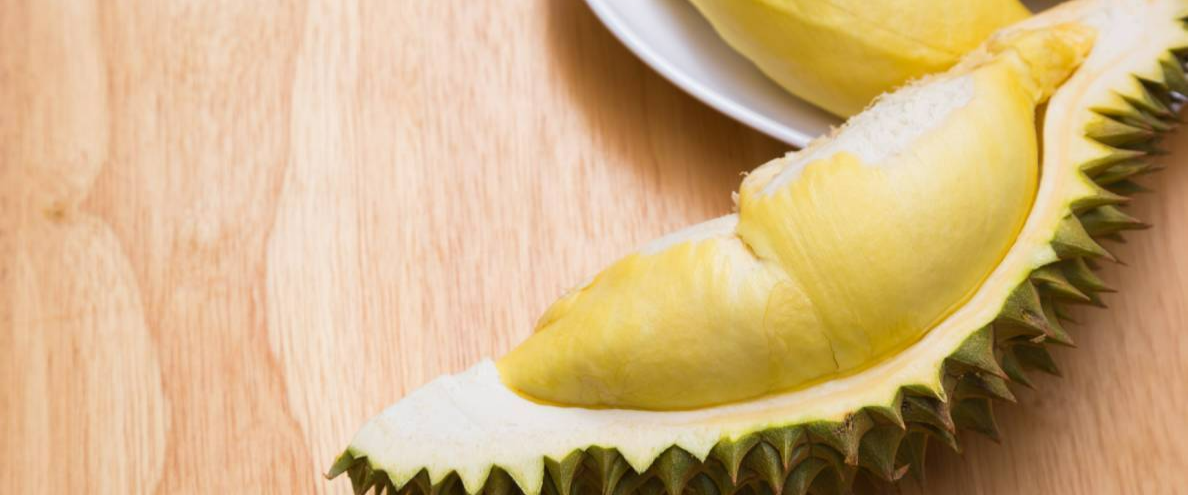When Chinese Fall in Love with a Fruit: War Begins

600 years ago, when Zheng He sailed to the South Seas, his deputy recorded in “The Overall Survey of the Ocean’s Shores” the following about durian: known by the natives as “du er yan” (thorny fruit), it had a scent “resembling the stench of rotten beef” but tasted “exquisitely sweet and good”. This shows that the Chinese recognition of the taste of durian has persisted from the Ming Dynasty to the present day.
Looking globally, durian can be considered the love of the Chinese people. Statistics indicate that China consumes over 90% of the world’s durian annually. By 2019, fresh durian had surpassed cherries to become the “king of imported fruits” in China. By 2023, both the scale and value of imported durian had significantly increased, reaching historic highs.
Durian has become a strategic product in economic and trade exchanges between China and various Southeast Asian countries. When leaders from Vietnam, Thailand, Malaysia, and other nations visit China, they spare no effort in promoting their respective varieties of durian, attempting to establish durian diplomacy.
With high economic value and substantial purchasing volume, the immense demand in the Chinese market has even influenced agricultural planting practices in Southeast Asia, leading many countries to convert vast rice fields into durian plantations.
Given the fragile economic foundations of Southeast Asian countries, fruits hold significant importance as export commodities. In trade interactions with China, while China exports industrial goods like machinery, automobiles, and equipment to ASEAN, durian stands out as the prime commodity for the exchange of ASEAN.
Durian’s significance to Southeast Asian nations surpasses people’s imagination.
It emits a pungent and overpowering odor, yet when consumed, it offers a soft, creamy texture. For durian enthusiasts, this sensory experience is captivating, even addictive.
Durian is rich in various nutrients, including sugars, starch, proteins, vitamins, fats, iron ions, and calcium ions, making it highly valued for its nutritional benefits.
Due to their unique characteristics, some rare durian varieties can fetch exorbitant prices. In 2019, in Nonthaburi, Thailand, a kanyao durian was sold to a local tycoon for 1.5 million Thai baht (approximately 42,838 USD). Even the cheapest of this variety commands at least 20,000 Thai baht (over 571 USD).
Rare Malaysian Black Thorn and Musang King durians are similarly expensive. On e-commerce platforms, these varieties command the highest prices, ranging between 100-200 yuan per kilogram.
Today, durian is the most imported fruit in China. In 2023, a report by HSBC noted that the Chinese market consumed 91% of the global durian supply. This year, data from the Food and Agriculture Organization of the United Nations indicated that China accounted for 95% of global durian consumption.
In essence, China is virtually the sole market for durian. In 2023, China imported over 1.42 million tons of fresh durian, marking a 72.85% increase from the previous year, with an import value of 47.2 billion yuan, a 74.8% year-on-year rise, both reaching historic highs.
Starting from July 16th, Great-Sunfoods has seen three consecutive trading limit-ups. Such gains are uncommon in an industry that is relatively less popular in the secondary market.
The surge was triggered by the signing of an agreement between China and Malaysia on June 19th, allowing fresh durians from Malaysia to enter the Chinese market. In the second half of 2023, Great-Sunfoods decided to invest in a durian plantation in Pahang, Malaysia, with a total investment of 280 million yuan, of which 77 million yuan has already been invested, primarily focusing on Musang King durians. Upon receiving this positive news, the company’s stock price was aggressively speculated by investors.
Data suggests that out of China’s 1.4 billion population, less than 1% have ever tasted durian, showcasing the substantial market potential. With a massive population base as a foundation, even a 1% increase in market space signifies significant commercial opportunities.
Thanks to its good soil, climate, geography, and water resources, Southeast Asia has a highly developed agriculture sector and is the most suitable region for durian cultivation. Southeast Asia has also become the most important durian import base for China.
As early as 2003, Thailand was the first to be approved by the General Administration of Customs of China to directly export fresh durians to China. Starting in 2022, Vietnam, the Philippines, and Malaysia successively obtained approvals. Due to its early advantage, Thailand has maintained a leading position in durian trade with China.
In 2023, of the 1.42 million tons of durians imported by China, 65% came from Thailand, 35% from Vietnam, and the Philippines accounted for less than 1%. Thailand’s durian exports to China reached $3.75 billion last year, a significant increase from $128 million in 2012, representing a 28-fold increase over ten years.
Due to the significantly higher economic value compared to rubber and rice, with the surge in exports, durian has sparked a wave of wealth in Southeast Asia. In the eyes of many in Southeast Asian countries, durian is akin to yellow gold, leading many to convert paddy fields into durian orchards.
On the second day of obtaining approval for fresh durian imports, Malaysia’s Minister of Agriculture and Food Security, Sabu, rallied the country’s 63,000 durian growers, urging them to prepare for exports to China, expand cultivation scales, and aim for large-scale exports to China in the next 5-6 years.
Given that durian trees take 5-10 years to bear fruit and that Musang King and Black Thorn durians are regarded as the top 2 Durian varieties of Malaysia, esteemed by durian enthusiasts as the ultimate varieties for tasting.
From 2017 to 2023, Malaysia exported $5.17 billion ringgit (about $796 million) worth of durians, with 73% sold to China, signaling a potential durian boom in the country.
Vietnam is also gearing up. With improving economic relations between the two countries, Vietnam has challenged Thailand’s dominance. In the first quarter of this year, China imported 35,000 tons of fresh durians from Vietnam worth $1.28 billion, showing rapid growth, even surpassing Thailand’s exports at one point.
Vietnam has caught up in the “Durian War,” partly due to its proximity to China and its multiple land border crossings, such as the Youyi Guan border gate and Dongxing border gate, which shorten import times compared to Thailand.
Currently, the Youyi Guan has become the largest durian import gateway in the country. The emergence of the China-Vietnam Railway Express and the appearance of cross-regional bidirectional durian specialty stores mean high-profit industry penetration, with the potential for further expansion with the continuous expansion of the China-Vietnam railway.
Moreover, Vietnam has witnessed a vigorous “Convert Paddy Fields to Durian” movement. In 2023, Vietnam’s durian cultivation area reached 110,000 hectares, a 24% increase year-on-year. Over the past decade, durian plantation areas have doubled.
Vietnam has historically been a major rice producer, requiring significant water resources for cultivation, which contrasts with durian’s needs. To prevent rainwater from entering durian orchards, Vietnamese farmers have even modified the terrain and installed various devices to assist durian growth.
The situation in Thailand is similar. Over the past 12 years, Thailand’s durian production has grown by 180%, with an 80% increase in cultivation area.
It is foreseeable that with China opening up its fresh durian import market, the “Durian War” among Thailand, Vietnam, the Philippines, and Malaysia will intensify.
In 2021, during the 30th anniversary commemorative summit of China-ASEAN dialogue relations, China pledged to import $150 billion worth of agricultural products from ASEAN in the next five years.
ASEAN has always been China’s largest trading partner, with a significant amount of goods from China sold in ASEAN. Correspondingly, various agricultural products from Southeast Asia are also marketed domestically. In the first half of 2024, the total trade value between China and ASEAN reached 3.36 trillion yuan, a 10.5% year-on-year increase, accounting for 15.9% of total foreign trade value.
In such a broad context, durian serves as an economic link fostering mutual development and a bridge connecting nations. In the relationship between Southeast Asia and China, durian is unleashing significant value, playing an irreplaceable role.
https://security.feishu.cn/link/safety?target=https%3A%2F%2Fwww.jiemian.com%2Farticle%2F11481048.html&scene=ccm&logParams=%7B%22location%22%3A%22ccm_bitable%22%7D&lang=zh-CN




